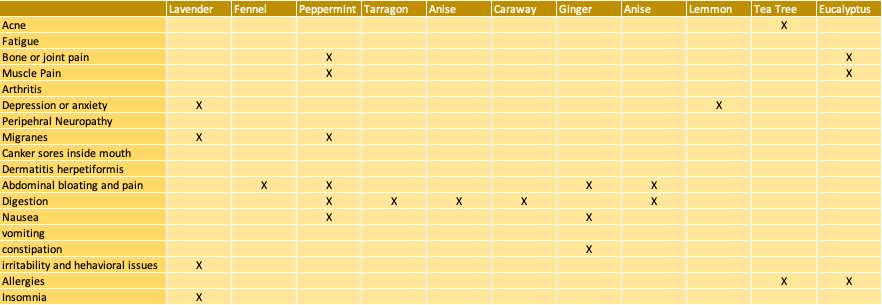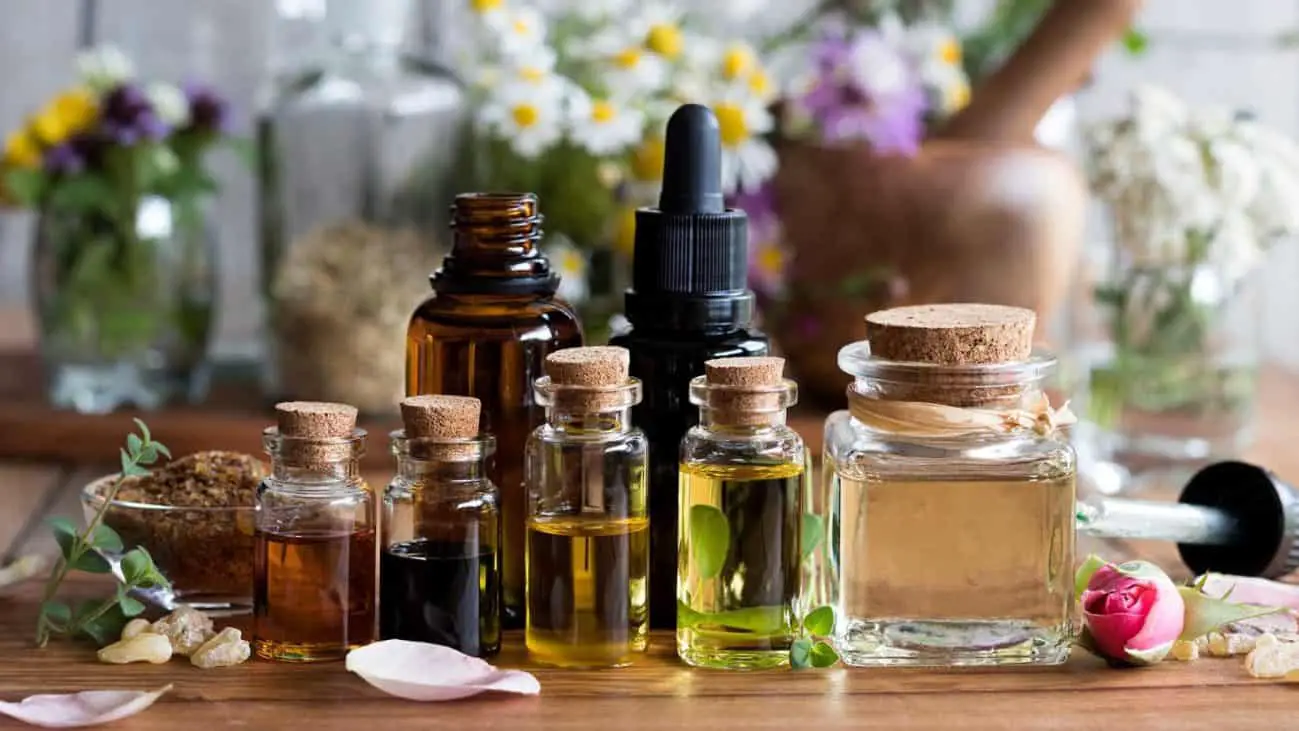Since this is a blog about living gluten-free, you may wonder why I’m broaching the subject of essential oils?! BECAUSE THEY ARE AWESOME! HAHA…okay, follow me here…
My health journey started with CELIAC DISEASE. I was diagnosed as an early adult, and my gluten-free life has been one of the best decisions. Along this new path, essential oils have helped me feel better about myself as well!
So, while my whole “journey to health” may have started with living gluten-free, it’s continued with exercise, better food choices, getting rid of negative emotional baggage in my life, and more. Like tons of you, I spent years on medications, and while I’m grateful for them when needed, I’m thrilled when something else can take its place.
Do I think they should replace all modern medicine? Ummm, no, don’t get crazy on me. However, I believe there’s a place for modern medicine and natural methods in our lives, and I’m grateful for both.
After using them for about 4 months, I’ve found they can really replace many toxic products surrounding my life. How cool is that?! Oils are used as allergy meds, cleaning products, gluten-free beauty products, and more. It’s awesome!
What are essential oils?
Essential oils are natural aromatic compounds found in the seeds, bark, stems, roots, flowers, and other parts of plants. Tons of plants can be used for medicinal purposes. The oils come from these precious plants. How? The oil is extracted through steam distillation and cold pressing. What does this mean for you? It means you get many of these “medicinal” properties in a single drop of essential oil.
How to consume essential oils?
There are three main ways to consume essential oils.
- Topically: This means you are applying the oil directly to your skin. There are some oils that you can directly apply and don’t need to be diluted. On the other hand, some oils work better if you dilute them by using carrier oils. The most common carrier oil is Coconut Oil (I personally use this one), but you can also use others – This Healthline article has a great list of carrier oils and how to use them.
- Aromatherapy: In this method, you are inhaling vapor that contains the essential oil. It would help if you used a vaporizer for this. You will want to add water and a few drops of the oil you want to inhale. I personally use the Young Living Essential Oil Diffuser because you get up to 4 hours of continuous use. It’s super easy to use, it has a nice low light, and it looks pretty. If you are interested in getting one, you can visit this link – it will take you to the Amazon page that sells it.
- Digesting: You can digest some oils; others you can’t. In this guide, you will learn which ones you can and which you can’t. When digesting, you can dilute a drop or two in your favorite tea or add to your favorite food.
Where to order gluten-free essential oils?
I personally have been buying Young Living essential oils for over a decade already. I 100% recommend and trust them. Feel free, though, to rock out your own research and pick oils that YOU love! If you want to learn more about Young Living oils and why I chose them for myself, visit this post I wrote.
What ingredients in oil should you avoid with celiac disease
One of the most important things to know is that oils are made from plants, so there’s not as much risk for cross-contamination. For example, corn starch and other thickening agents often used in cooking can be contaminated since they’re derived from gluten grains. On the other hand, with essential oils, you don’t have to worry about that.
Most people with celiac disease are gluten sensitive and should avoid ingesting anything containing wheat, barley, or rye. As a general rule, if the package doesn’t say Gluten-Free, I contact the brand and ask if it contains any gluten or it was manufactured in a place where other gluten products are produced.
How to treat celiac disease naturally?
It is important to note that as of today, there is no known cure for Celiac disease. We can only treat the symptoms or avoid them altogether by no digesting gluten or products derived from gluten (wheat, barley, or rye).
I have listed the most common Celiac disease and Gluten intolerant symptoms I found listed in Celiac.org in the table below – I’ll leave the link here to the symptoms article if you want to read more. The table shows you what celiac symptoms I treat naturally with each essential oil. You can also skip to the content after the table, explaining what each oil can treat symptoms and how to consume them.
What essential oils are good for celiac disease
Essential oils can help the body recover more efficiently as it transitions to a gluten-free diet or if you have ingested gluten by mistake.
The oils Ginger, Fennel, and Coriander have been used to help those with celiac disease by soothing stomach discomfort.
On the other hand, Peppermint, Tarragon, Anise, and Caraway essential oils support digestion. They also provide relaxation to the tissues of a person with celiac disease and help digestion.
This blend of essential oils provides relief for celiac disease symptoms and other digestive conditions, and motion sickness.

Lavender Oil
Lavender oil is typically used as an antibacterial and helps with the digestive system and rheumatism, migraine treatment, stress relief, anxiety control.
How to consume lavender oil to treat Celiac diseases symptoms:
One quick and easy way to use lavender oil is to rub a drop or two in your hands, move your hands close to your face and inhale deeply. This will help you calm and even sleep great.
Another way is to dilute a drop or two into a vegetable carrier oil and use it topically.
Fennel Oil
Fennel oil is antiseptic, antispasmodic, anti-inflammatory, and gastroprotective.
How to consume fennel oil to treat celiac diseases symptoms:
One of the symptoms it helps me the most is digestion. It helps me with gut spasms, preventing gas and bloating, and even as a natural laxative.
If I am out of toothpaste, I will use a drop or two on my toothbrush. Not only will it help with fresh breath, but it also has the bonus of helping you fight sweet cravings.
Another way is to dilute a drop or two into a vegetable carrier oil and use it topically.
If you want to treat digestive issues, you can add a drop or two to a cup of chamomile tea.
You can also try aromatherapy by using a diffuser. Here is one of my favorite diffusers if you are interested in getting one yourself.
Peppermint Oil
Peppermint oil is typically used to soothe digestive discomfort, nausea, clear congestion, soothe headaches, and PMS.
Peppermint also helps stimulate bile production, which is needed for proper digestion and to eliminate toxins from the body. It also helps relieve flatulence or abdominal pain and distension.
When used topically, the oil has an energizing effect on the nervous system while relaxing muscles simultaneously.
How to consume peppermint to help Celiac Disease:
Essential oils are soluble in carrier oils. A person with celiac disease can consume peppermint by mixing it as an essential oil to any carrier oil and then consuming the mixture.
The nasal passages also absorb well when using these therapeutic grade blends of essential oils for celiac disease.
This is another great oil to use in aromatherapy by using a diffuser. Here is one of my favorite diffusers if you are interested in getting one yourself.
Ginger Oil
Ginger oil is typically known for its superb digestive properties to treat symptoms like nausea, colic, spasms, indigestion, diarrhea, and stomach ache.
When used in aromatherapy, it can help with respiratory conditions and gives you courageousness and self-assurance. This oil is known as “the oil of empowerment”.
How can Ginger Oil be used to treat Celiac Disease symptoms:
Rub a drop or two in your hands and get your hands close to your face. Inhale deep and let the essential oil do its thing. This works great for nausea.
If you rub a drop or two on your stomach and the bottom of your feet, it will help with digestion.
Anise Oil
Anise oil is another great essential oil that works wonders as it stimulates digestion.
It is important to note that Anise Oil by Young Living is hard to find. I instead use LorAnn’s version. This one is also Gluten-Free and just as good.
How can you use anise oil to treat Celiac Disease symptoms:
You can use a drop or two directly on your stomach and rub. While you have the oil in your hands, you can also get your hands close to your face and inhale to help your nerves.
You can use a drop of oil in a glass of water for drinking after a meal. This will help stimulate digestion.
How to Combat Allergies with Essential Oils – Full Recipe and Extra Tips Included
- 3 drops of Lavender
- 3 drops of Lemon
- 3 drops of Peppermint
DIRECTIONS: For adults: Combine all 3 oils into a capsule (you can buy 00 size capsules at your local health food store or online), and swallow. Do this 1- 3 times a day as needed. I find that one pill in the morning usually can hold me over. Also, to make it really simple, I make 2 weeks worth of pills at a time and put them in the freezer (no need to defrost when taking them from the freezer, your body will do that.;) Putting them in the freezer keeps the oils from leaking out, and it saves time in the morning. However, if you think swallowing essential oils sounds like madness, lol, these alternate methods may work for you:
Additional METHODS TO COMBAT ALLERGIES USING ESSENTIAL OILS for ADULTS AND CHILDREN:
- Lavender Swipe – Swipe a drop of lavender on the inside of the cheeks. This gets the lavender into the bloodstream very quickly.
- Use your nose: Put 1-2 drops of lavender on a q-tip and rub it inside your nostrils.
- Use a Diffuser: Add lavender, lemon, and peppermint to your diffuser.
- Inhale: Rub a couple of drops of lavender in your palms, hold them over your nose and mouth, and inhale deeply.
- Rub the lavender over the sinuses, on feet, chest, and/or throat.
- Topical: Rub lavender, lemon, and peppermint onto the bottoms of your feet (this is what I do for my 2-year-old, 2x a day. It’s totally working!).
The combination of these oils is a natural antihistamine. How cool is that? Of course, everyone’s body reacts differently, but this recipe is pretty popular among allergy sufferers in the oil world because it’s the bomb. It’s the allergy bomb.
Disclaimer: Any suggestions made on this website are particular to Young Living essential oils and should not be used with oils from another source. The FDA has not evaluated statements made on this website about Young Living Essential Oils. These products and information are not intended to diagnose, treat, cure or prevent any disease. Anyone suffering from disease or injury should consult with a physician. If you are currently on medication, do NOT stop it. That is all.










